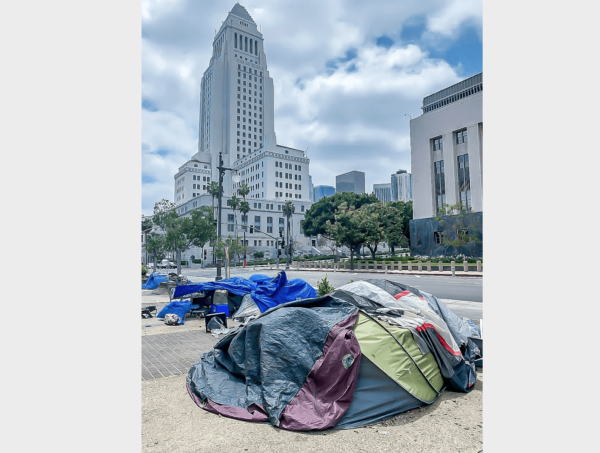By Topher Sanders
This story was originally published by ProPublica. ProPublica is a Pulitzer Prize-winning investigative newsroom. Sign up for The Big Story newsletter to receive stories like this one in your inbox.
ProPublica spent months investigating how a single underregulated toxic chemical — formaldehyde — creates an inescapable cancer risk for everyone in America. It’s in the air outside, at levels that fail to meet the public health goals set by the Environmental Protection Agency. And it’s in our homes, coming from our couches, our clothes and our babies’ cribs — sometimes at levels that can trigger breathing problems, allergic reactions and asthma.
We modeled pollution data and deployed our own air monitors to measure formaldehyde levels around us. We interviewed more than 50 experts and read thousands of pages of scientific studies and EPA records. During it all, we kept in mind the single question we knew readers would most want answered: How can I reduce my exposure?
The following are some common sources of the chemical and suggestions for reducing your risk, as informed by our reporting.
Wood furniture and floors
Be careful when buying new furniture. One of the most significant sources of formaldehyde in the home has traditionally been furniture made with composite wood that uses glues to bind strands, particles, fibers or boards together. The adhesives used in this type of furniture can contain formaldehyde, which goes through a process called off-gassing, where the chemical is released into the air over time. Federal regulators have set limits on how much of the chemical some composite woods can release. But those limits, set more than a decade ago, are still well above the level that EPA scientists recently established to protect people from asthma, allergic reactions and other breathing problems.So, at the very least, you want to look at the item’s packaging for a label that shows it is compliant with the standards set under the Toxic Substances Control Act.
The law covers goods made of hardwood plywood, medium-density fiberboard and particleboard. All products covered by the law must feature some sort of label saying they comply with TSCA, though the labels can look different from product to product. Compliance does not mean the item is formaldehyde free. It means the company is certifying that any formaldehyde emissions are at a low enough concentration to meet TSCA’s requirements. Some types of composite woods aren’t covered by the law, and while those are used mainly for structural projects, they can also be used to make furniture and shelving. So if you are unsure what type of composite wood a piece of furniture is made from, make sure to ask a salesperson or company representative before you purchase.
Another label you can look for is the California Air Resources Board Phase 2. That, too, doesn’t mean the furniture or flooring is free of formaldehyde, but that it adheres to the state’s emission standards, which are similar to the TSCA rules. Some manufacturers include this on their labels for goods sold in and outside of California. Two other labels to look for are “no-added formaldehyde” (NAF) or “ultra-low-emitting formaldehyde” (ULEF). Those mean the manufacturer’s product has gone through additional testing.
If you do buy furniture you suspect contains formaldehyde, environmental experts suggest you allow the item to air out for as long as one full week in a highly ventilated area, such as a garage, however impractical that may be. If that isn’t possible, leave the windows open near the furniture to improve ventilation. It can take as long as two years for items to release most of their formaldehyde, so buying secondhand could be better for your health as well as your wallet. Purchasing solid wood furniture, while expensive, is the best alternative when trying to avoid high levels of formaldehyde.
Cosmetics and personal care
Inspect the ingredients in your personal care products. The European Union banned formaldehyde in cosmetics, but in the U.S., the Food and Drug Administration has yet to follow suit. Hair straighteners, particularly those marketed to Black women, have been found to contain formaldehyde. The chemical helps to form links with the amino acids in hair and, when heat is added, typically from a flat iron, the links are made stronger and the hair is straightened. But that heat can also turn formaldehyde into a gas and release it into the air.
When reading the ingredients labels, of course you should look for formaldehyde, but also watch out for formalin or methylene glycol, which are formaldehyde-related ingredients that release the chemical when heated. Those same three ingredients can also appear in nail care products. In nail hardeners, formaldehyde helps them bond to the keratin in nails. Also some nail polishes contain a toluenesulfonamide-formaldehyde resin that’s used to make the polish more resilient and adhere better to fingernails. That resin can release formaldehyde as it dries.
Candles, indoor fireplaces and gas stoves
Flames mean formaldehyde. The chemical is a byproduct of combustion, so anytime there is a fire, there is formaldehyde. This is as true for huge forest blazes as it is for lit candles or burning cigarettes. In the home, fireplaces and gas stoves can be a significant source of formaldehyde.
ProPublica reporters learned this firsthand earlier this year when they took formaldehyde readings at various places around New York and New Jersey. One of the highest concentrations was measured during a dinner party where candles were burned and a gas stove was operating. Multiple studies have also documented increased formaldehyde exposure when smoking cigarettes and vaping. Those who smoke can reduce indoor formaldehyde levels by doing it outdoors, but they will still be breathing in the chemical themselves.
As is true whenever formaldehyde is present, ventilation is crucial. If possible, open windows and doors when candles, fireplaces or stoves are used. Make a habit of turning on the stove vent when you cook. And while it’s expensive, if you’re able to, consider replacing your gas stove with an electric stove, which generally produces less formaldehyde. Naturally you might ask: Do air purifiers help? Researchers are still investigating how well air purifiers reduce formaldehyde. One study suggested that some air purifiers could even create formaldehyde as a by-product. Scented air fresheners can also introduce formaldehyde into the air.
Clothes
Sometimes formaldehyde is even in our clothes. Clothes that are designed to resist wrinkles or stains are more likely to contain the carcinogen. The chemical is used during the dyeing process and to help reduce shrinkage, mold growth and wrinkles. The use of formaldehyde in clothes can irritate skin conditions, such as eczema. But it’s often very difficult to tell whether clothing was made using the chemical. Labels generally won’t tell you. Clothes woven from natural fibers like linen, wool and cotton are less likely to have been made using formaldehyde than synthetic fabrics, like polyester. Washing all your new clothes before you wear them can help reduce your exposure. One recent study found formaldehyde in 20% of the cotton clothing researchers examined, but it was gone after the items had been washed.
Cars
Formaldehyde adhesives can be found in vehicle dashboards, seat coverings, flooring materials, carpeting, door trim, window sealant and armrests. And similar to furniture, the highest levels of the chemical are often found in new vehicles. To reduce your exposure to formaldehyde in cars, you should again rely on ventilation. On particularly hot days, you’ll want to allot time to roll down your car windows and allow the vehicle to air out. ProPublica found that not only do new cars contain levels of formaldehyde higher than the EPA calculated to protect people from breathing problems, allergic reactions or asthma symptoms, but cars as old as four years can continue to release potentially harmful levels of the chemical, particularly on hot days. Set your car’s air conditioner to allow outside air to circulate through the vehicle.
There is one throughline in all of the advice and research on reducing formaldehyde exposure indoors — ventilation. Opening windows and doors, turning on fans and ventilators, and leaving products in open spaces for long periods of time so they can release formaldehyde all allow the chemical to vent away from us. Formaldehyde’s ubiquity means there isn’t a way to absolutely wall ourselves off from it. But opening the window may be our cheapest and best course of action.
Sharon Lerner and Al Shaw contributed reporting.
ProPublica is a Pulitzer Prize-winning investigative newsroom. Sign up for The Big Story newsletter to receive stories like this one in your inbox. Republished with Creative Commons License (CC BY-NC-ND 3.0).







